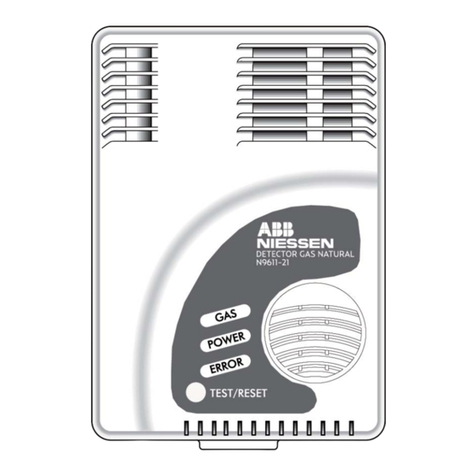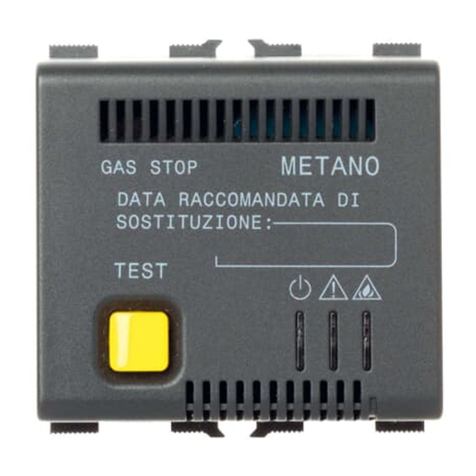
8
4.2. Desactivación de la alarma y restablecimiento de
la situación normal
Una vez que el gas ha desaparecido, el Detector de Gas detiene la alarma Sonora
y los pilotos de alarma pasan a un estado de parpadeo en espera del reconocimiento
de la alarma por parte del usuario. En este estado se mantiene activa la salida de
alarma. Para restablecer la situación de reposo pulse durante varios segundos el
pulsador TEST/RESET hasta escuchar un pitido. En este momento el piloto rojo
de alarma queda apagado y el relé de activación de la alarma cierra sus contactos
de salida libres de tensión. Si la salida de alarma está conectada a una electroválvula
de rearme manual ésta debe abrirse manualmente.
La función de RESET o puesta en reposo no será operativa mientras la concentración
de gas supere el nivel de alarma.
Atención: Antes de desactivar la alarma y rearmar el sistema deber
eliminar la causa del problema, o bien cerrar el paso general de gas
mediante el cierre manual de la llave de paso, ya que en el momento que
se desactiva la alarma la electrov lvula se abre y vuelve a haber gas en
la vivienda.
EN CASO DE ALARMA, LAS SIGUIENTES ACCIONES DEBEN SER TOMADAS:
- Mantenga la calma. Pulse TEST/RESET si el indicador de Gas Natural está
iluminado.
- Apague cualquier llama. No fume ni encienda ni apague ningún interruptor
eléctrico.
- Abra las puertas y ventanas para evacuar el gas.
-Cierre la llave suministro de gas y todos los electrodomésticos de
combustión. No utilice ningún electrodoméstico hasta que haya sido
inspeccionado por un experto.
- Si alguien sufre de los posibles efectos de envenenamiento por Gas Natural
(p.e. dolor de cabeza, mareos, nausea o vómitos) consiga ayuda médica y
avise de la sospecha de envenenamiento por Gas Natural.
- En caso de que la alarma persista, y la causa de la fuga no sea evidente o
no pueda ser reparada, evacue el local o la vivienda INMEDIATAMENTE
dejando las puertas y ventanas abiertas. Notifique el hecho al distribuidor
o a un servicio de emergencia de gas.
E




























